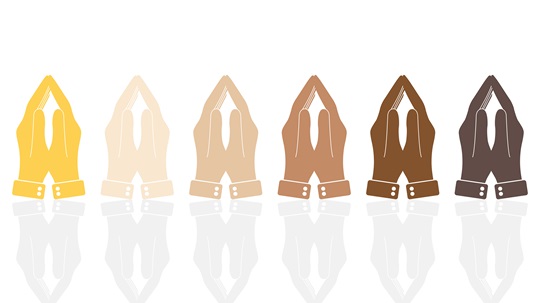Here are the Top 10 verses shared on Twitter with darker vs. lighter skin tones.

“He who finds a wife finds what is good and receives favor from the Lord.”
If you have tweeted this Bible verse (Prov. 18:22, NIV) along with an emoji depicting a specific skin tone, there’s an 86 percent chance it had a darker skin tone rather than a lighter one.
It’s an example of how Twitter illustrates racial and cultural contrasts in the church. Nothing in the verse itself implies a skin tone, but it appears to resonate more with people who tweet darker-toned emojis.
Last year, the Unicode Consortium, the group that ratifies emojis, approved “skin tone modifiers” for emojis of people and body parts. The default tone for these emojis is usually Simpsons yellow (it varies by platform). But users can optionally set them to one of five tones, from pale to dark.
More than half of the time, people use the default emoji skin tone. Since April 9, 2015, when these tones first arrived on Apple’s iOS, people chose a specific tone about 45 percent of the time. (Only certain emojis allow you to specify a tone.)
Andrew McGill of The Atlantic recently wondered “Why White People Don’t Use White Emoji,” finding that light-toned emojis are less common on Twitter than demographics would imply.
Though three out of four Twitter users are white, only about 48 percent of skin tone modifiers on Twitter reflect the two lighter tones, while 52 percent reflect the three darker tones.
McGill posits that affirmatively identifying as someone with light-toned skin feels “uncomfortably close to displaying ‘white pride,’ with all the baggage of intolerance that carries.”
There’s a similar distribution when people share Bible verses on Twitter and include a skin tone modifier: …


